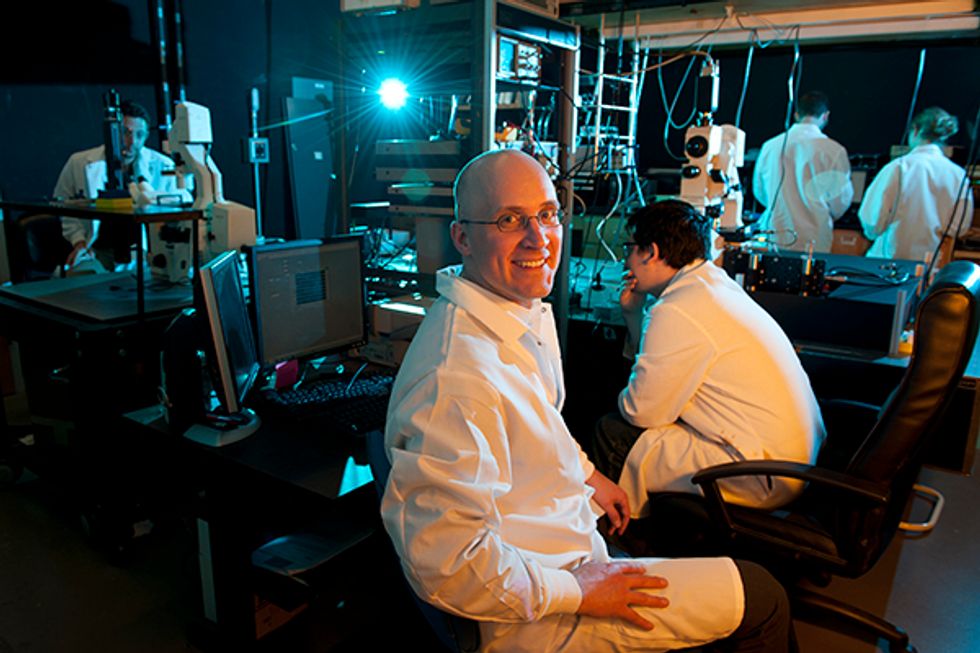As chips shrink ever smaller, traditional lithography techniques have begun to lose their ability to remain accurate and the hopes of maintaining Moore's Law have dimmed as a result. But directed self-assembly, a way to build integrated circuits from the bottom up, has been held out as a possible way to keep shrinking chip feature sizes and and sustain Moore’s Law.
Basically, directed self-assembly is a way of exploiting the ability of molecules to arrange themselves into ordered structures—with a little direction from our end. Previously, H.-S. Philip Wong used lithography to carve indentations that served as a template for the molecules to self-assemble themselves. This combination of traditional lithography with self-assembly techniques has been a line of research that has seemed to be the most promising in the field.
A less traditional line of research for directed self-assembly has been the work of Angela Belcher, in which DNA serves as the template and viruses actually build up the integrated circuit.
The research, which was published in the Proceedings of the National Academies of Science (PNAS) online edition (“Multi-scale kinetics of a field-directed colloidal phase transition”), was able to observe how the particles transitioned from a solid-like material into an organized crystalline structure. Furst claims that this represents the first time that anyone has observed this guided “phase separation” of particles.
“This development is exciting because it provides insight into how researchers can build organized structures, crystals of particles, using directing fields and it may prompt new discoveries into how we can get materials to organize themselves,” Furst says in the university press release covering the research.
An interesting twist to the research was the enlistment of NASA to see how the particles would react in a weightless environment. To realize this some of the experiments were conducted in the International Space Station. The weightless environment allowed for some fresh observations on the self-assembly process. The particles first developed into its solid-like form and then coarsened to the point of breaking apart. After separating—not unlike the way water and oil separate when combined—the particles formed themselves into the crystalline lattice structure.
Furst further notes in the article: “This is the first time we've presented the relationship between an initially disordered structure and a highly organized one and at least one of the paths between the two. We’re excited because we believe the concept of directed self-assembly will enable a scalable form of nanotechnology.”
Dexter Johnson is a contributing editor at IEEE Spectrum, with a focus on nanotechnology.




